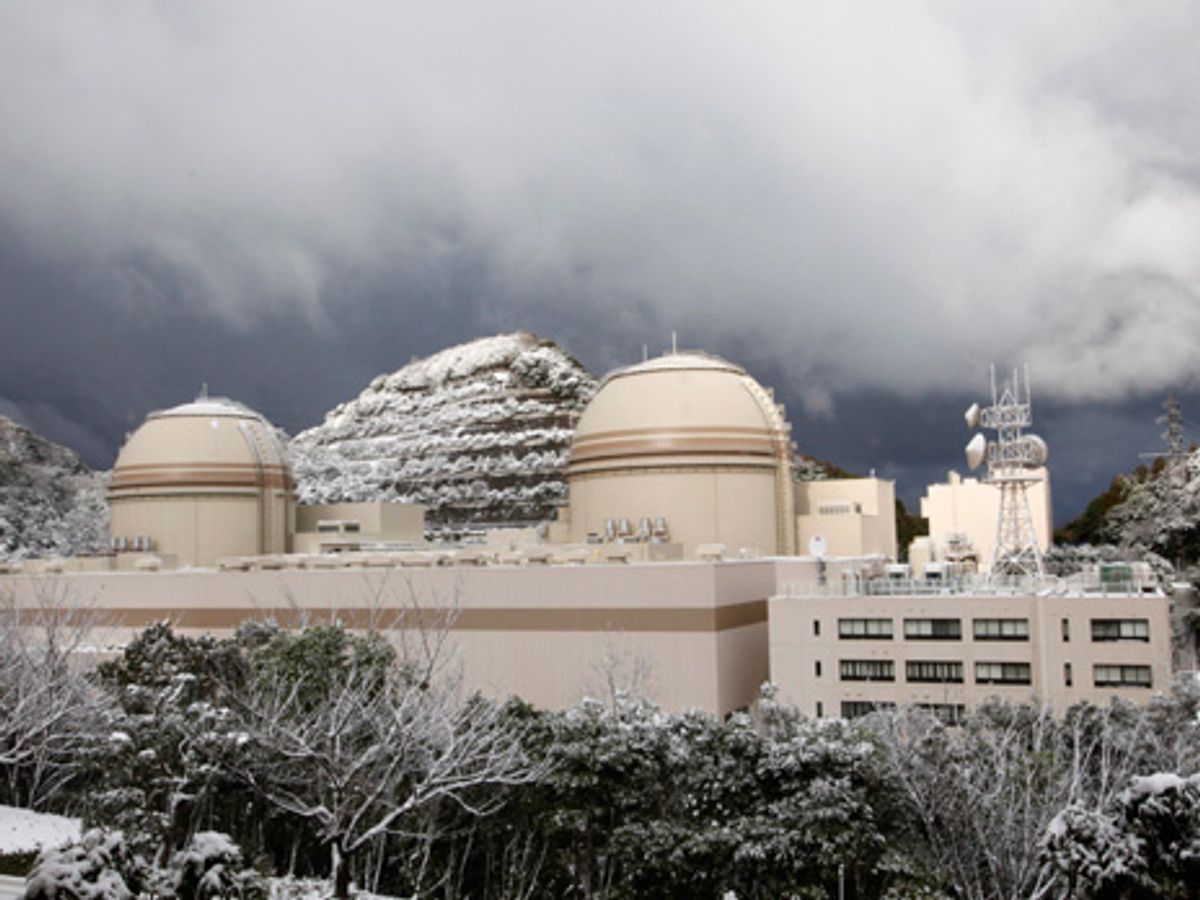The Japanese government Saturday ordered the restart of the1.18-gigawatt reactors 3 and 4 at the Oi nuclear plant in Fukui Prefecture, central Japan. The decision came just a couple of hours after Fukui governor Issei Nishikawa travelled to Tokyo to give his approval. Japan has been without any nuclear power since 5 May when the last of some 50 active reactors was shut down to undergo inspections and stress tests in the wake of the 11 March earthquake last year.
It took concerted government and utility lobbying to persuade Fukui local and prefectural government officials that reactivation was both necessary and safe. Nishikawa also spelled out preconditions to be met before he was willing to agree. The preconditions revolved around safety concerns, in particular the acquisition of local agreement on the restart and a public reassurance from the prime minister that the reactors were safe.
Pressured by business groups, Prime Minister Yoshihiko Noda held a press conference 8 June to stress the need to restart the reactors to prevent power shortages and likely social and business disruption. He said the nuclear industry had learned from the Fukushima nuclear accident. Kansai Electric Power Co. (KEPCO), the operator of the Oi plant, had instituted new government-ordered safety measures and was implementing others under deadline, including building a higher seawall to protect against tsunami, he told reporters. “By making maximum use of the knowledge gained so far,” said Noda, “we have confirmed that even if the nuclear power station was to lose all of its (conventional) sources of electricity, the reactor cores would not be damaged.”
Following Noda’s public appeal, the Fukui government’s own nuclear safety committee submitted a report endorsing KEPCO’s safety measures, while the mayor of Oi town, Shinobu Tokioka, also approved of the restart. These events made it a relatively easy matter for the Fukui governor to give his consent, despite strong anti-nuclear opposition, which fears the restart will open the way to reactivation of the other twenty or so idled reactors, which like the two Oi reactors, have already passed their stress tests.
“But it’s impossible to restart the reactors immediately,” points out professor Keiji Miyazaki of the Osaka Science and Technology Center. He says it will take roughly two weeks to clean water and pipes in the No. 3 reactor system of impurities, to remove any unwanted air and to test valves and equipment. Then, after firing up Unit 3, “it will take a few days to gradually power it up (after which) the process must be repeated for Unit 4,” says Miyazaki. KEPCO says full output could be reached as early as 24 July.



